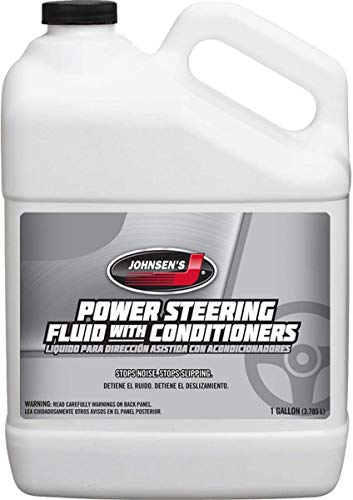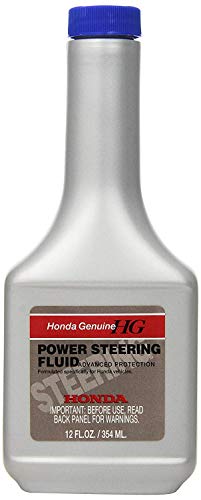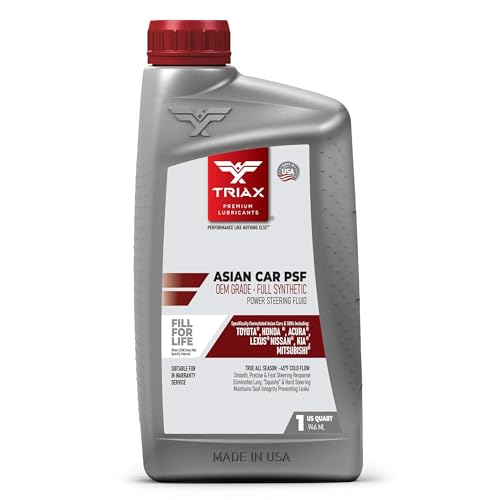Have you ever noticed power steering fluid leaking from your reservoir? It’s a frustrating issue that can leave you feeling anxious about the health of your vehicle.
Understanding why this happens is crucial for your safety and the longevity of your car. We’ll delve into the common causes of power steering fluid leaks and what you can do to fix them. You’ll discover practical tips to prevent further damage and ensure your steering system operates smoothly.
Don’t wait until it’s too late—read on to empower yourself with the knowledge you need to keep your vehicle in top shape.
Common Symptoms
Power steering fluid leaks can cause several noticeable issues. Identifying these symptoms early can save you time and money. Pay attention to your vehicle’s behavior. Here are some common signs to watch for.
Visible Fluid Leaks
One of the first signs is fluid on the ground. Look for a bright red or pink fluid under your car. This indicates a leak from the power steering system. Check the reservoir and hoses for any cracks or damage. A steady drip or puddle suggests a serious problem.
Noisy Steering Operation
Noisy steering can signal issues with your power steering fluid. Listen for whining, squealing, or grinding noises. These sounds may occur when you turn the wheel. They indicate low fluid levels or air in the system. Address these noises quickly to avoid further damage.
Difficulty In Steering
If you struggle to turn the steering wheel, it’s a warning sign. This could mean the power steering fluid is low or leaking. A stiff steering wheel makes driving challenging. You may also notice a delay in response when you turn. Don’t ignore these symptoms; they need immediate attention.
Causes Of Overflow
Power steering fluid can overflow from the reservoir for several reasons. Understanding these causes helps in addressing the issue quickly. Let’s explore the main reasons behind this problem.
Overfilled Reservoir
One common cause is an overfilled reservoir. Many drivers do not check fluid levels correctly. Adding too much fluid can lead to overflow. The reservoir has a maximum fill line. Exceeding this line causes the fluid to spill out.
Trapped Air In The System
Another reason is trapped air in the system. Air can enter the power steering system during fluid changes. This air creates pressure in the reservoir. The pressure forces fluid to escape. Bleeding the system can help remove trapped air.
Damaged Reservoir Cap
A damaged reservoir cap can also cause overflow. A cap that does not seal properly allows fluid to leak. It can also let air into the system. This leads to fluid loss and pressure issues. Replacing the damaged cap is a simple fix.
Impact Of System Wear
Power steering fluid can leak from the reservoir due to wear and tear in the system. This issue may arise from damaged hoses or seals. Regular checks can help prevent bigger problems and ensure smooth steering. Keep an eye on fluid levels to maintain vehicle performance.
The impact of system wear on your vehicle’s power steering can be significant. If you notice power steering fluid leaking from the reservoir, it’s a red flag indicating that components are wearing down. Understanding the causes of this issue can help you take action before it leads to bigger problems.Worn Out Seals
Seals are crucial for keeping the power steering fluid contained. Over time, these seals can wear out due to heat and pressure. When seals are damaged, fluid can escape, leading to a noticeable drop in your power steering fluid levels. You might experience a stiffer steering wheel as a result. Have you ever noticed a change in how your car responds when turning? That could be the seals crying for attention.Aging Power Steering Pump
The power steering pump plays an essential role in circulating fluid throughout the system. With age, the pump can start to falter. An older pump may not generate enough pressure, causing fluid to leak from the reservoir. This issue often leads to whining noises when you turn the wheel. If you’ve encountered this, it’s time to consider a pump replacement before it affects your steering performance.Damaged Hoses
Hoses are responsible for transporting fluid from the reservoir to the pump and back. Wear and tear can cause cracks or leaks. If you spot fluid pooling under your car, check the hoses first. A simple visual inspection can save you from a costly repair down the line. Have you checked your hoses lately? Keeping an eye on them can prevent a breakdown when you least expect it.Contaminated Fluid Issues
Power steering fluid can leak from the reservoir due to contamination. Dirt and debris can mix with the fluid, causing pressure issues. This leads to leaks and reduced steering performance. Regular checks can help identify problems early. Keeping the fluid clean is essential for safe driving.
Contaminated fluid issues can lead to serious problems in your power steering system. When the fluid becomes contaminated, it can affect the steering performance and lead to costly repairs. Understanding the causes of contamination is essential for maintaining your vehicle’s steering system. Here are some common issues that can arise from contaminated power steering fluid.Debris In The Fluid
Debris can easily find its way into your power steering fluid. Dirt, metal shavings, and rubber particles from worn hoses can create a thick sludge. This buildup restricts fluid flow and can damage vital components. You might notice a rough steering feel or hear unusual noises while turning. Both are signs that debris may be affecting your system. Regularly checking the fluid can help you catch these issues early.Fluid Breakdown Over Time
Power steering fluid doesn’t last forever. Over time, it can break down due to heat and pressure. This degradation leads to a loss of lubricating properties and can make the fluid less effective. Have you ever noticed that your steering feels less responsive? This could be a sign that your fluid has broken down. Changing the fluid at recommended intervals can help maintain optimal steering performance.Using Incorrect Fluid Type
Using the wrong type of power steering fluid can cause problems. Different vehicles require specific fluid formulations. Mixing fluids can lead to chemical reactions that compromise the fluid’s effectiveness. Have you checked if you’re using the correct fluid for your vehicle? Always refer to your owner’s manual for guidance. Using the right fluid type will ensure your power steering system operates smoothly and efficiently.Temperature-related Problems
Temperature changes can cause power steering fluid to expand or contract. This may lead to fluid leaking out of the reservoir. Understanding these temperature-related issues helps in maintaining your vehicle’s power steering system.
Understanding temperature-related problems is crucial when diagnosing why power steering fluid leaks out of the reservoir. Changes in temperature can significantly affect the viscosity and behavior of the fluid. If you’ve noticed fluid seeping from your reservoir, temperature fluctuations could be a key factor at play.Overheating Of Fluid
Power steering fluid can overheat due to various reasons, such as excessive use or a failing pump. When the fluid gets too hot, it becomes less effective at lubricating components. This can lead to increased pressure within the system, causing the fluid to escape from the reservoir. Have you ever driven in stop-and-go traffic on a hot day? That’s a prime scenario where your power steering fluid might overheat. If you notice your steering feeling sluggish or sticky, check the fluid temperature and consider if you’ve been driving under strenuous conditions.Cold Weather Effects
Cold temperatures can also impact your power steering fluid. When the temperature drops, the fluid thickens, making it harder for the pump to circulate effectively. This can result in increased pressure, leading to leaks at the reservoir. You might have experienced difficulty steering when your car is cold, especially during winter mornings. This thickening fluid can cause strain on your system, and if left unchecked, it may lead to leaks. Always check your fluid levels when the weather turns chilly to avoid surprises.Thermal Expansion
As temperatures rise, the power steering fluid expands. This thermal expansion can cause the fluid to overflow from the reservoir if it’s overfilled. It’s essential to keep your fluid levels in check to accommodate these temperature changes. Have you ever topped off your power steering fluid only to find it leaking shortly after? That might be due to thermal expansion. Regularly monitor your fluid levels, especially during seasonal changes, to maintain optimal performance. Understanding these temperature-related problems can help you prevent leaks and ensure your power steering system operates smoothly. Are you keeping an eye on your fluid levels with changing seasons?Diagnosis Steps
Diagnosing power steering fluid leaks is crucial. Understanding where the problem lies can save time and money. Follow these steps to find the source of the leak.
Inspecting The Reservoir
Start by checking the power steering fluid reservoir. Look for cracks or damage. A broken reservoir can cause fluid to escape. Make sure the fluid level is appropriate. Low fluid levels may indicate a leak.
Checking For Air Bubbles
Next, inspect for air bubbles in the fluid. Air bubbles can mean a problem in the system. They can lead to erratic steering. Observe the fluid while the engine runs. Bubbles indicate that the system needs attention.
Examining The Cap And Seals
Finally, check the cap and seals of the reservoir. A loose cap can let fluid escape. Damaged seals can also cause leaks. Ensure everything fits tightly. Replace any faulty parts to prevent further issues.
Preventive Measures
Power steering fluid may leak from the reservoir due to worn seals or loose connections. Regular checks and maintenance can help prevent these issues. Keeping an eye on fluid levels ensures safe and smooth steering.
Preventive measures are essential for keeping your power steering system in top shape. Addressing issues early can save you from costly repairs and ensure a smooth driving experience. Here are some practical steps you can take to prevent power steering fluid from leaking out of the reservoir.Routine Fluid Checks
Checking your power steering fluid regularly is a simple but effective way to catch problems early. Aim to inspect it every month or before long trips. Look for signs of leaks around the reservoir and hoses. If the fluid level is low, it might indicate a leak that needs your attention. Consider keeping a maintenance log to track your fluid levels over time. This habit will help you notice any sudden drops.Proper Fluid Level Maintenance
Maintaining the correct fluid level is crucial for your steering system’s performance. Make it a point to top off the fluid as needed, but avoid overfilling. An overfilled reservoir can cause fluid to overflow, leading to leaks. Use a dipstick or a marked container to measure the fluid accurately. When you notice the level dropping frequently, it’s time to investigate further.Using Manufacturer-recommended Fluid
Always use the power steering fluid recommended by your vehicle’s manufacturer. Different vehicles require specific types of fluid for optimal performance. Using the wrong fluid can lead to poor lubrication and increase the risk of leaks. Check your owner’s manual for the right specifications. By sticking to manufacturer recommendations, you can enhance your system’s lifespan and effectiveness. Taking these preventive measures not only keeps your power steering fluid in check but also contributes to a safer and more enjoyable driving experience. What steps will you take today to ensure your steering system runs smoothly?When To Seek Professional Help
Power steering fluid leaking from the reservoir can signal serious issues. Signs like difficulty steering or fluid puddles under your car should prompt action. Seeking professional help can prevent further damage and ensure safe driving. Don’t ignore these warning signs; timely attention is crucial.
When it comes to maintaining your vehicle, noticing power steering fluid leaking from the reservoir can be concerning. While some minor leaks might seem manageable, others indicate more serious issues. Understanding when to seek professional help can save you time, money, and stress.Recurring Leaks
If you find yourself constantly topping off your power steering fluid, it’s time to take action. Recurring leaks suggest that there’s an underlying problem that needs attention. Ignoring this can lead to greater damage down the line. Consider a friend who faced this issue. He thought a simple refill would suffice, but the leaks continued. Eventually, he had to pay for costly repairs because he delayed seeking help. Ask yourself: Are you comfortable with a temporary fix, or do you want a permanent solution?Unresolved Steering Issues
Do you notice your steering wheel feeling stiff or unresponsive? If simple fixes haven’t resolved your steering problems, professional intervention is necessary. These issues could stem from low fluid levels or a more serious malfunction. A colleague of mine experienced a sudden loss of steering control while driving. It was terrifying and could have been avoided had he consulted a mechanic earlier. If your steering feels off, don’t ignore it. Your safety depends on a well-functioning power steering system.Severe System Damage
If you observe any signs of severe damage, like fluid pooling under your vehicle or strange noises while turning, seek help immediately. These symptoms can indicate significant problems within the power steering system. Delaying repairs can worsen the situation, leading to even higher repair costs. Imagine being stuck on the side of the road because of a failure in the power steering system. The inconvenience and potential danger are not worth the risk. Prioritize your vehicle’s health and consult a professional if you notice these alarming signs. Taking care of your car is essential. Recognizing when to seek help can make all the difference in ensuring your vehicle runs smoothly and safely.Frequently Asked Questions
What Would Cause Power Steering Fluid To Come Out Of The Reservoir?
Power steering fluid can leak from the reservoir due to a damaged cap or seal. A worn hose or a failing power steering pump may also cause fluid to escape. Overfilling the reservoir can lead to overflow, resulting in fluid loss.
Regular maintenance helps prevent these issues.
How Do I Fix A Leaking Power Steering Reservoir?
To fix a leaking power steering reservoir, first, identify the leak source. Tighten any loose connections or replace damaged hoses. Clean the reservoir area and refill with the appropriate fluid. If the reservoir is cracked, replace it with a new one to prevent further leaks.
Regular maintenance helps avoid future issues.
Why Is My Power Steering Fluid Bubbling Out Of The Reservoir?
Bubbling power steering fluid often indicates air trapped in the system. It can also result from overheating fluid or a malfunctioning pump. Check for leaks or low fluid levels, and consider a system flush to resolve the issue. Regular maintenance can prevent these problems from occurring.
What Are The Symptoms Of A Bad Power Steering Reservoir Cap?
Symptoms of a bad power steering reservoir cap include fluid leaks, air bubbles in the fluid, and unusual noises while steering. You may also notice a warning light on the dashboard and difficulty in steering. Inspect the cap for cracks or damage to prevent further issues.
Conclusion
Power steering fluid leaking from the reservoir can cause big problems. It may lead to steering issues and damage your car. Regular checks help catch leaks early. Always use the right fluid type for your vehicle. Fixing leaks quickly saves time and money.
Stay safe on the road by keeping your power steering system in good shape. Remember, a small issue can lead to a bigger one. Don’t ignore signs of trouble. Taking action now can prevent more costly repairs later. Your car deserves proper care.

Benjamin Grey is an automotive engineer and writer at Car Parts Advisor. With years of experience in the automotive industry, he shares expert advice on car parts, maintenance, and repairs to help car owners keep their vehicles running smoothly.



